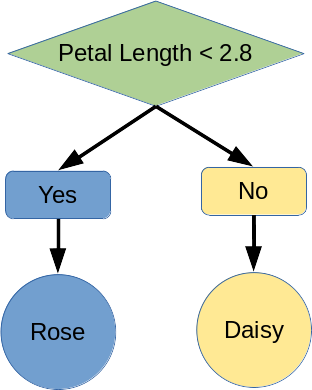Successful Machine Learning: Part 2 (What is Being Learned?)
Thursday, June 10th, 2021
For background on this post, please see my last entry, Part 1: Questions and Baselining.
What separates today’s machine learning from human learning? One word: concepts.
“How so?” you might ask. To see what I mean, let’s start by looking at standard machine learning inputs and outputs. I’ll focus on supervised learning.
Supervised Machine Learning
Supervised machine learning is an approach where we start with a set of records. In each record, one field contains the correct answer, known as the target attribute. The other fields in the record contain related information, formally known as descriptive attributes. For example, we might have a set of measurements for flower petals and the flower’s name for each set of measures. We want the computer to learn how to identify different types of flowers. For those of you with machine learning experience, you’ll recognize the Iris data set as the inspiration for my example.
Supervised machine learning is similar to how we might teach children some set of math facts. We give them many examples of addition problems and answers. Over time we would like them to understand the mechanics of addition and solve novel problems. We have a similar goal with supervised learning. We want to give the computer lots of examples with the correct answers and have it figure out how to answer new problems.
Decision Trees
|

Figure 1: Example Decision Tree |
||||||||||||||||||